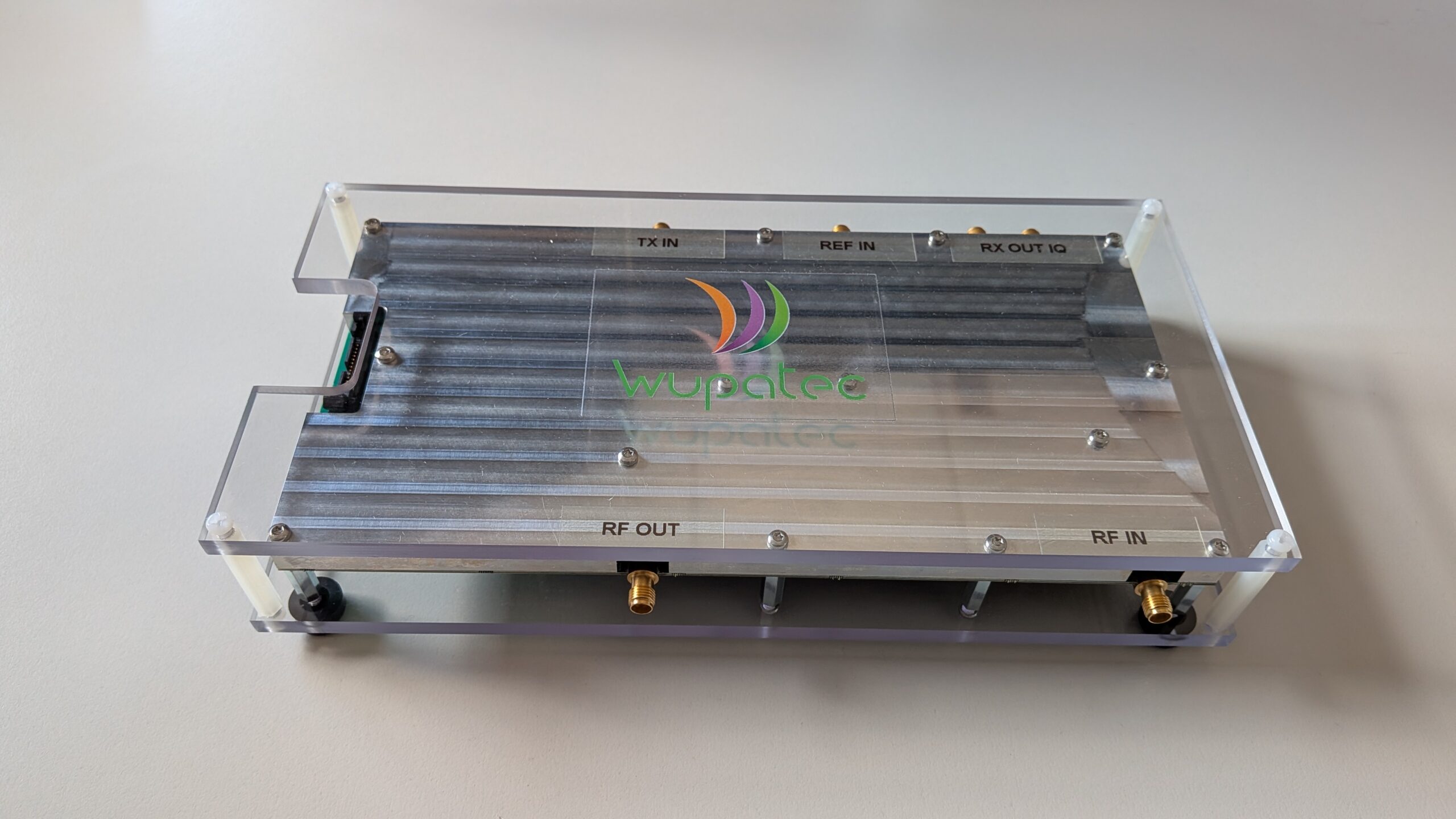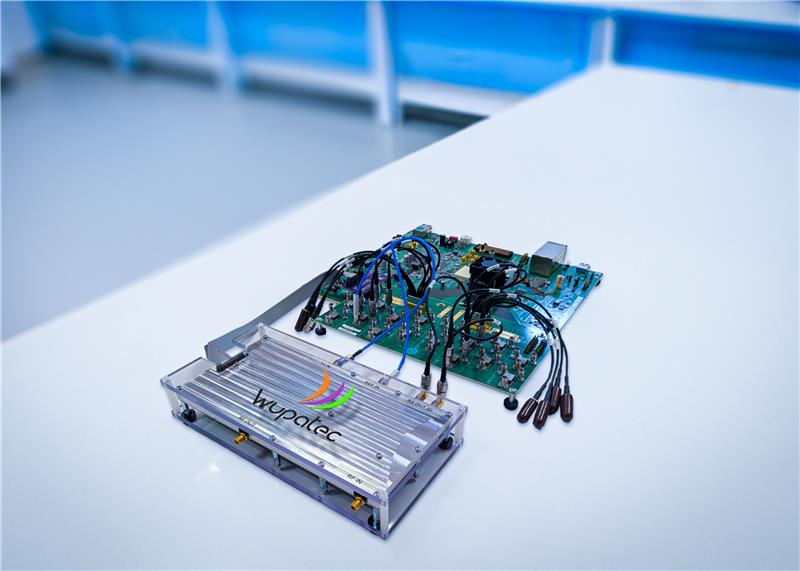FR3 band
Bridging RFSoC designs into the FR3 spectrum
The wireless industry is entering a new frequency frontier: the FR3 band (7.125 – 24.25 GHz). This band will enable the next leap in 5G-Advanced and future 6G technologies.

by Irene de Gruijter and Lea Chazalon
October 31, 2025 in Success Stories
To help engineers, researchers, and manufacturers explore this emerging range, WUPATEC introduces the FR3 Extension Board: a simple and efficient way to expand RFSoC-based test platforms into the FR3 spectrum.
Why does the FR3 band matter?
We have already covered the topic of the emerging FR3 band in an article (here) and during a webinar that brought together industry and academia to discuss the subject (link here). Long story short, the FR3 range will play a central role in 5G-Advanced and future 6G systems. It combines high data rates and low latency (which are features of FR1 and FR2 bands) with the ability to penetrate buildings and maintain connections over longer distances than mmWave (or FR2). All this, while avoiding the drawbacks of the current bands in use.
However, most current prototyping and testing platforms (particularly those based on RFSoC) are limited to frequencies below 7.125 GHz, staying in the FR1 band. This limitation creates a gap between today’s 5G systems and the technologies needed for the next generation of networks.
That’s where WUPATEC’s FR3 Extension Board comes in.
A bridge between FR1 and FR3
The FR3 Extension Board acts as a frequency translator between the RFSoC baseband (up to 7.125 GHz) and the FR3 spectrum (7.125 -24.25 GHz).
By upconverting and downconverting signals, this plug-and-play solution allows exploring this entire range without changing the existing setup.
This approach makes it possible to:
Prototype 5G-Advanced and 6G waveforms
Perform vector signal analysis and EVM/ACPR measurements
Validate new radio architectures under real conditions.
All this, without the need to purchase specific RFSoCs that cover this band.
The board integrates seamlessly with the AMD RFSoC ZCU670 evaluation kit and WUPATEC VST firmware, providing a compact, plug-and-play solution for research environments.
High-performance, compact design
At just 24 cm long and 12 cm wide, the FR3 Extension Board delivers the same capabilities as any RFSoC would at this frequency range.
It supports up to 1.2 GHz of instantaneous bandwidth and sampling rates reaching 1.474 GSa/s. This enables precise signal generation and analysis across 7 GHz up to 25.8 GHz.
Researchers can test multi-carrier signals, high-order modulations, or MIMO setups with the same level of accuracy and control as they would expect at lower frequencies.
Technical overview
| Feature | Specification |
|---|---|
| Frequency coverage | 6.9 – 25.8 GHz |
| Instantaneous bandwidth | Up to 1.2 GHz |
| Sampling rate | Up to 1.474 GSa/s |
| Compatible platform | AMD ZCU670 + WUPATEC VST Firmware |
| Supported systems | 5G-Advanced / 6G Prototyping |
| Dimensions | 240 mm (L) × 120 mm (W) × 45 mm (H) |
With the commercialization of 5G-Advanced in 2023, the FR3 Extension Board provides an indispensable tool for early adopters, academia, and industry leaders shaping the next decade of wireless connectivity.
Testing it through a demo
This year, during the tradeshows IMS (International Microwave Symposium) and EUMW (European Microwave Week), we presented the results of a strong partnership with Mitsubishi Electric and Wupatec for the first time:
Mitsubishi Electric presented its latest GaN power amplifier module, highlighting outstanding efficiency performances in the FR3 band, and Wupatec validated its performance through its FR3 Extension Board.
The video below explains how the setup is arranged.
Full article on Microwave Journal: here

